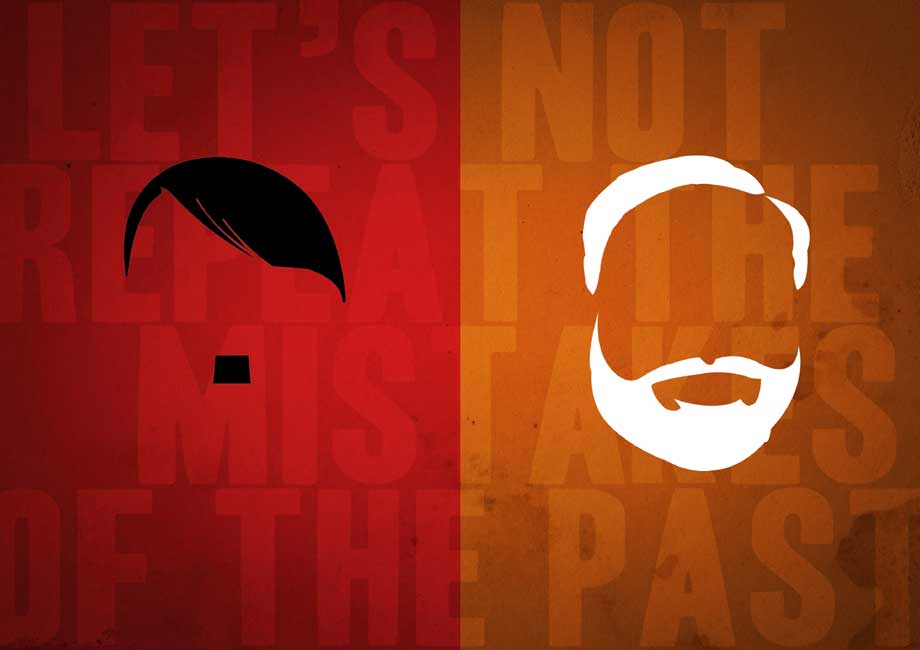Binoy Kampmark
What a disaster for the conservatives, though hardly a glory for British Labour either. Sadiq Khan, a Labour technocrat rinsed in the chummy spinelessness of the Blairite spin machine, won the London Mayoral election after a campaign that could only be described as vicious. The Tories had hoped to sink Khan over alleged extremist tendencies; Labour, in turn had to show that the Tories had their own problem with conservative religious practices.
The Tories were also hoping that disagreement within Labour’s ranks over what Prime Minister David Cameron has termed Labour’s “problem with anti-Semitism” would somehow render it unelectable in various constituencies. London was to be the prize, having been held by conservative, mostly clownish Boris Johnson for two terms.
The Achilles heel of anti-Semitism was given a rub by former Mayor Ken Livingstone, who opened his sizeably confident mouth again, coming to the defence of Naz Shah, an MP from Bradford West. Shah was suspended over designated anti-Semitic postings via social media.
On BBC Television’s Daily Politics program, Livingstone contended as a “historical fact” that, “Hitler’s policy when he first came to power was to move Germany’s Jews to Israel.” At stages, history does have a habit of discolouring under the Livingstone gaze.
The Labour Party’s response was swift: “Ken Livingstone has been suspended by the Labour Party, pending an investigation, for bringing the party into disrepute.” John Mann, another Labour MP, also attacked Livingstone with apoplectic determination, calling him a “Nazi apologist”.
The conservative campaign, fronted by Zac Goldsmith, attempted to capitalise. Goldsmith’s accusation – one can hardly call it an argument – was that Khan had given “platform, oxygen, and cover” to a host of political and religious extremists. Specific reference was made to the political flirting Khan had with south London cleric Suliman Gani.
The honours list of defences and associations also comprised such figures as Dr. Yusuf al-Qadarawi, a Muslim scholar accused of intellectualising the moral cause of suicide bombings, and Sajeed Abu Ibrahim, who operated a Pakistan camp that trained London 7/7 bomber Mohammad Sidique Khan.
Such behaviour on Khan’s part would confuse unadulterated opportunism with genuine association, a point made by his attendance of an event hosted by the defunct Stop Political Terror in August 2004. For those interested in political trivia, the group did count among its supporters Anwar al-Awlaki of al-Qaeda.
Through his time, Khan has done what he is most characterised by: associate, garner, and cultivate votes, many from the conservative Muslim quarter. It was precisely this point that got some conservative commentators worked up, with The Economist recapitulating on Labour’s “ingrained problems of anti-Semitism” and its tolerance of “gender-segregated civic events”.
A campaign so filled with muck it was keeling over saw a range of attacks mounted against Khan on various grounds, though many conservatives were far from thrilled by this approach. Conservative London Assembly member Andrew Boff, for one, found it “outrageous” that Goldsmith had effectively argued that “people of conservative religious views are not be trusted, and you shouldn’t share a platform with them”.
Toby Young, writing in The Spectator, saw no reason for Goldsmith to apologise. Young found it regrettable that Labour’s spin on the campaign being a “dog-whistle” one in nature proved digestible even to Tories.
Did it have any effect on Khan’s chances of re-claiming the city for Labour? “Any Conservative candidate faced an uphill struggle getting elected in London, one of the only areas in the country where Labour did better in 2015 than in 2010.”
Goldsmith’s campaign was itself marred by ambiguities, despite having a potentially strong case in such areas as the environment. (He had formerly edited the Ecologist Magazine.) Rather than taking the road of painting Khan as an unreliable extremist that would mar his mayoral credentials while offering a slew of ameliorative policies for London’s escalating house prices, he resorted to some ducking, weaving and prevaricating.
While the Goldsmith manifesto did reflect on how there were “too many young adults still living in their childhood bedrooms trapped by London’s escalating house price,” the overall message fell away. A rather unimaginative campaign began casting light on Khan’s Muslim background in general, a point that was never going to sell well.
The other feature at play with Khan’s victory is how his cool relationship with British Labour’s Jeremy Corbyn will develop – or atrophy, as the more likely case is. Corbyn had maintained is distance from the political knife of Khan’s ambitions, preferring to spend time with Bristol’s newly elected mayor Marvin Rees instead of going to the London swearing-in ceremony.
Khan, who was never a fan of the Corbyn dynamo in Labour politics, could not have been expecting any favours from a man he ignored, only to then nominate as an outside contender for leader.
Not even waiting for the dust to settle, the newly elected leader trained his guns on Corbyn, thereby doing the conservative’s work for them. On the Andrew Marr Show, he claimed that, “we’ve got to stop talking about ourselves and start talking to citizens about issues that matter to them.” The Tories may not have reason to be disappointed for too long – the spin doctors getting ready to return.

